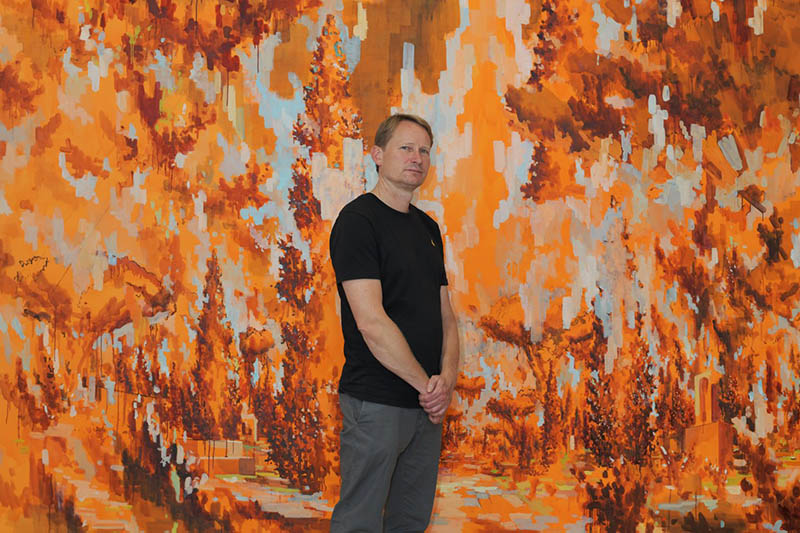Expanded Painting: Breaking the Limits of the Canvas
In 2024, painting has transcended traditional frames to integrate into architectural spaces, creating immersive experiences. This new form of expression reconfigures the relationship between the artwork, its environment, and the viewer. Let’s take a look at some examples of artists and their creations.
Katharina Grosse
Grosse’s work challenges traditional notions by painting directly onto walls, ceilings, and objects. Her piece It Wasn’t Us (2020) at the Hamburger Bahnhof in Berlin is a milestone of this practice. But in 2024, Grosse has continued pushing color beyond the canvas, transforming entire environments into chromatic explosions that immerse the viewer in alternative worlds. This was showcased in her spectacular exhibition at the Centre Pompidou in Metz.
David Schnell
With Speed (2022), Schnell created abstract landscapes that expand through three-dimensional installations. In 2024, she has continued blending painting, projections, and objects, turning the space into a stage where physical reality and artistic illusion merge. Her works invite viewers to explore an immersive environment in constant flux.


Climate Art and Sustainability
When painting becomes not only a medium of protest and reflection but also an example of how art can adopt more responsible practices. Here are some creators associated with this label we could call climate and sustainable art.
John Sabraw
Sabraw, known for Toxic Art (2021), uses pigments derived from polluted rivers to create his vibrant abstract paintings. This approach demonstrates how art can transform waste into beauty and awareness. His commitment continues to inspire a new generation of painters to experiment with recycled materials and eco-friendly processes. In Iron Dragon (2024), exhibited at the North Carolina Museum of Art, he uses iron oxide from drainage waters of abandoned mines.

Olafur Eliasson
Although Eliasson primarily works with installations, his influence extends to painting. Works like Your Waste of Time (2013) highlight the urgency of climate change. In 2024, many painters have adopted his approach by creating ephemeral pieces that deteriorate over time, serving as visual metaphors for environmental fragility.

Sustainable Materials in Painting
The use of natural and biodegradable pigments is an emerging trend. Céline Condorelli stands out for creating works that gradually disappear, highlighting the transient nature of existence. Condorelli integrates these natural pigments and artisanal techniques to produce ephemeral pieces that disintegrate over time. It is her way of emphasizing our relationship with nature. Condorelli has also developed collaborative projects involving local communities, addressing themes such as memory, ecology, and the role of art in everyday life. Her interdisciplinary approach positions her as an influential figure in contemporary art, offering an ethical and ecological perspective that connects creativity with social issues.

Painting in 2024 has proven to be in full transformation. It exceeds the canvas to flow into spaces, resulting in the viewer being immersed in multisensory experiences. Furthermore, the commitment to sustainability is redefining the creative process, positioning art as a catalyst for social and environmental change. These innovations not only break barriers but also reaffirm the relevance of painting in the contemporary world.































































